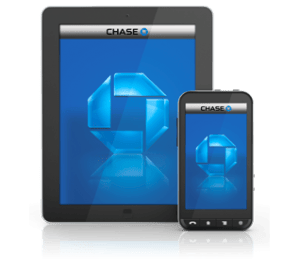Watch your (CC) six
 Watch your (CC) six: A member asks…
Watch your (CC) six: A member asks…
Hey Chris, you give great advice, thanks! One thing you mention is that I should watch my credit card transactions like a hawk. So every month when I get my statement, I look over all the transactions to make sure they’re legit. Is there anything more I should be doing?
Congratulations, you are doing more to protect your online identity (and your money) than most people do! In the military, we used a term “watch your six” which means watch out behind you, and watching your credit card transactions follows along the same thought. I hope you are watching your back with your bank statements as well as your credit card statements. For credit cards, you are protected from fraudulent purchases as long as you report any within the issuing bank’s time period (usually 30 days). The Federal Trade Commission governs your liability, you can read their recommendations here.
 If you want to be able to see your transactions faster than when you get your monthly paper statement, you can sign up for online access to your account. Just visit the issuing bank (for example, Chase.com). Look for a link to either ‘Sign Up’, ‘Enroll’, or ‘Create an Account’. Each issuing bank has their own set of requirements to follow to create an account and prove that you are…you. Be sure to create a very secure password for this account, and don’t use that password on any other online place. You can use a Password Manager (like www.LastPass.com), or at least create a 13-character (or more!) password made up of the first letter of each word of a sentence that you create and memorize. You can change a few characters to fit whatever password rules the website has (such as using numbers, capital letters, special characters). As an example (don’t use this, please make up your own):
If you want to be able to see your transactions faster than when you get your monthly paper statement, you can sign up for online access to your account. Just visit the issuing bank (for example, Chase.com). Look for a link to either ‘Sign Up’, ‘Enroll’, or ‘Create an Account’. Each issuing bank has their own set of requirements to follow to create an account and prove that you are…you. Be sure to create a very secure password for this account, and don’t use that password on any other online place. You can use a Password Manager (like www.LastPass.com), or at least create a 13-character (or more!) password made up of the first letter of each word of a sentence that you create and memorize. You can change a few characters to fit whatever password rules the website has (such as using numbers, capital letters, special characters). As an example (don’t use this, please make up your own):
- Sentence: “I sure hate to make up crazy passwords that are hard to remember
- Mnemonic: Ish2m^cptah2r
 Once you have an account created and verified, you can log in anytime and look at transactions as often as you like. But wait, there’s more! If you have a smartphone, you can download and install the issuing bank’s app (for example, the Chase app).
Once you have an account created and verified, you can log in anytime and look at transactions as often as you like. But wait, there’s more! If you have a smartphone, you can download and install the issuing bank’s app (for example, the Chase app).
 As you log into your online account on that app, look for the option to get a notification every time your credit card is used. For example, Chase has this option under the Manage Alerts menu. You can set an alert for various events, such as when an online or phone charge is authorized on your credit card, when your card is used at a gas station, and when any transaction exceeds the amount you specify (hint: specify anything over $0.00 and all charges will get you a notification).
As you log into your online account on that app, look for the option to get a notification every time your credit card is used. For example, Chase has this option under the Manage Alerts menu. You can set an alert for various events, such as when an online or phone charge is authorized on your credit card, when your card is used at a gas station, and when any transaction exceeds the amount you specify (hint: specify anything over $0.00 and all charges will get you a notification).

If you have an iPhone 6 or 6 Plus, you have another option. You can register your credit card with Apple Pay. Even if you don’t use Apple Pay, the app will notify you anytime that credit card is used. If you use an Android-powered smartphone, you can use Google Wallet and get pretty much the same thing, and now there’s both Android Pay and Samsung Pay to add to your options. I have to say any of these options are loads more secure than the new chip cards banks are sending us.
And if you’re worried about the security of your online access to your credit card (via website or app), you should know that your risk is negligible (so long as you use a good and secure password), certainly much lower than simply using your credit card anywhere or even having a credit card. You’ve probably seen news reports of all kinds of businesses being hacked, and that’s a much greater risk to your online identity these days.
But even if you forego these other methods for a quicker look at your account activity, you can rest assured that if you see a fraudulent transaction on your monthly statement and report it to the issuing bank right away, you’ll be protected from fraud. You’re doing the right thing, congratulations!
This website runs on a patronage model. If you find my answers of value, please consider supporting me by sending any dollar amount via:
or by mailing a check/cash to PosiTek.net LLC 1934 Old Gallows Road, Suite 350, Tysons Corner VA 22182. I am not a non-profit, but your support helps me to continue delivering advice and consumer technology support to the public. Thanks!






